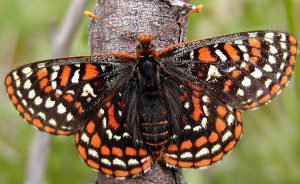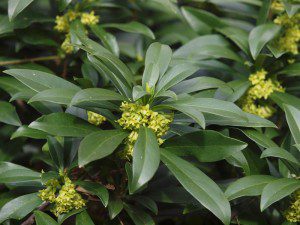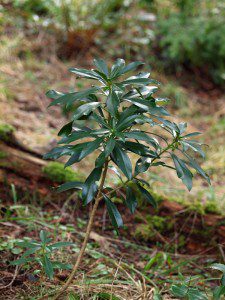GAMING GRANT BALANCES DCA 2012 BUDGET
Denman Conservancy Association (DCA) has received a $19,000 grant from the BC Gaming Commission. Unlike most other granting agencies the Gaming Commission provides funds that can be used for operations. Thus the significant shortfall in funds that had been identified for DCA’s operations during the current year has now been remedied.
In addition the funds will enable DCA to tackle a few of those tasks that had been sidelined for lack of funds.
AGM NOTES
The AGM was held on 26th March and was well attended. Before settling down to the routine of Reports members were entertained by a presentation of the natural wonders of Denman Island superbly assembled by Peter Karsten.
The motion to amend the DCA Bylaws to accommodate the government’s needs to protect Ecological Gifts was passed. After the discussion at the AGM the Board has decided to again retain the accounting firm Lund Thorburn to review the DCA’s books.
Following the election of Directors and the appointment of Officers at the subsequent Board meeting we have:
DCA OFFICERS AND DIRECTORS FOR 2012
- Patrick Fawkes
- Jenny Balke
- Doug Bell
- Annie Corddry
- David Critchley: Chair
- John Dillon
- DD Fuchs: Treasurer
- John Millen
- Peter Karsten: Vice Chair
- J Thornton
- Susan-Marie Yoshihara: Secretary
DCA’s programs will be managed by three committees:
- Lands – Chair J Thornton
- Outreach – Chair Peter Karsten
- Admin – Chair John Dillon
DENMAN’S OWN ENDANGERED BUTTERFLY – TAYLOR’S CHECKERSPOT
Our Checkerspots are still alive on Denman this spring, despite 2 years of cold wet springs. Populations declined in ’10 &’11 with the extended wet spring weather, which hampers the butterfly’s flight, nectaring and egg-laying. But the little caterpillars are now out foraging among the plantains and speedwells and will soon be making cocoons to pupate. Butterflies can be expected by mid-May and can be seen flying in wet meadows until mid-June. If you see one please let us know, we’re hoping for a bit of warm weather so the population can re-bound! Andrew Fyson 335-9047 or Jenny Balke 335-2151. Thanks!
Caterpillar has 8 orange spots on its back!

Butterfly is white, orange and black.

Contributors to this Newsletter: Jenny Balke, David Critchley, Patrick Fawkes, Andrew Fyson, Peter Karsten, John Millen, Susan-Marie Yoshihara
Denman Conservancy Association Newsletter May 2012
ALIEN INVADERS
We’re talking plants here.
In conserving our native plant heritage DCA attempts, on the land it manages, to control the non-native plants that are likely to multiply and spread.
There are many plants of concern. Among them are Holly, English Ivy, Daphne Laurel and Broom. We don’t like Broom as it is a serious threat to Gary Oak meadows (and on Tree Island), but generally it is not a threat in our forests. Once the trees grow up, they shade out the Broom effectively.
Fall and winter is a good time to work on ‘The Holly and the Ivy’, so we will address them then. Right now is the time to deal with Daphne Laurel as it is in flower and the resulting seeds will be spread by birds.
Daphne Laurel, also known as Spurge laurel, is a shrub up to 4 feet tall and has shiny, entire (unsegmented) leaves. The flowers, which appear from late February to April, are a yellowish green. The berries are initially green, then black. They mature in early summer.

Daphne Laurel is a nasty customer. Its leaves and especially its seeds are toxic and some people can get a skin reaction by simply handling the leaves. It’s also sneaky, volunteering in our gardens (birds again), and posing as an innocuous, modest, well-dressed shrub with tidy, glossy leaves.
If allowed to propagate within our forests Daphne Laurel will out-compete the native ground covers such as Oregon grape, perhaps because of its toxic weaponry.
First year plants can be pulled by (gloved) hand until their stems reach pencil thickness. Older shrubs must be cut off below ground or the stump will re-sprout. Bypass loppers can be used for this. Generally the least ground disturbance in dealing with this plant is best. Disturbance will result in seeds in the soil sprouting and there will be more plants to pull next year.
DCA is trying to control Daphne Laurel where it occurs on land we manage, notably in Morrison Marsh.

COMING DCA EVENTS
- May 5th Saturday: Bird Song Walk by Patrick Fawkes et al, meet Denman Rd. at North Central Rd. 8:30 am.
- May 16th Wednesday: Game Species Management by Kim Brunt, Sr. Wildlife Biologist, Ministry of Forests, Lands and Natural Resource at 7:30 pm, Back Hall.
- May 20th Sunday: Tree Island Walk by Andrew Fyson meet at Morning Beach Park 10 am.
- May 26th Saturday: Drawing from Nature workshop by Peter Karsten, at Old School 10 am.
- June 9th Medicinal Plants by Sheelagh MacKenzie
- June 14th Thursday: River Otters presentation by Jennifer Balke 7:30 pm Back Hall.
- June 16th Wildflower Walk by Andrew Fyson.
Watch for notices in the Grapevine and reminders on the sign board by the Big Tree at the top of the Ferry Hill.
Home & Garden Tour
Conservancy’s fabled Country Home and Garden Tour will happen next in 2013, June 15th & 16th. DCA is now recruiting help to organize the event. We are thrilled that Des and Sandy Kennedy’s garden is going to be on the Tour. Islanders and out of town friends would be very well advised to start planning now to attend our 20th Tour.



